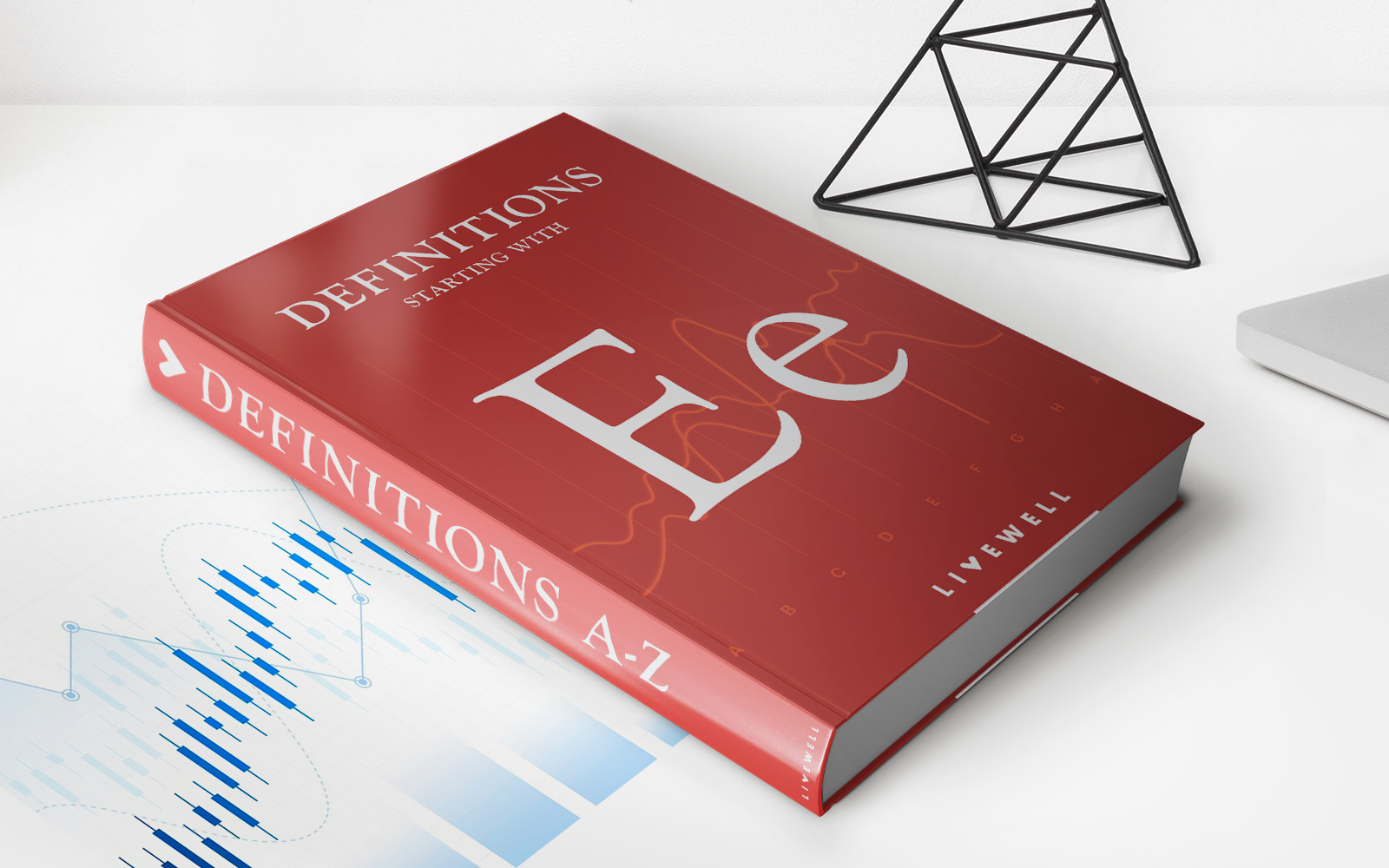

Finance
What Is The Face Amount In Life Insurance?
Modified: February 21, 2024
Learn about the importance of face amount in life insurance and how it relates to your financial security. Discover the role of face amount in managing your finances effectively.
(Many of the links in this article redirect to a specific reviewed product. Your purchase of these products through affiliate links helps to generate commission for LiveWell, at no extra cost. Learn more)
Table of Contents
Introduction
Welcome to the world of life insurance, where the financial well-being of your loved ones is protected even after you’re gone. One of the key components of a life insurance policy is the face amount. Understanding what the face amount is, how it works, and its importance is crucial for anyone considering purchasing life insurance. In this article, we will dive into the concept of face amount, its significance, and the factors that influence it.
Life insurance provides a financial safety net for your beneficiaries in the event of your death. It offers peace of mind, knowing that your loved ones will be taken care of financially when you’re no longer able to provide for them. However, navigating the world of life insurance can be overwhelming, especially with the various terms and jargon associated with it. That’s where understanding the face amount becomes crucial.
The face amount, also known as the face value or the sum assured, refers to the predetermined amount of money that will be paid out to your beneficiaries upon your death. It is the core benefit of a life insurance policy and acts as a financial cushion to help your loved ones cover expenses, debts, and maintain their quality of life when you’re no longer there to support them.
Think of the face amount as the total protection that your life insurance policy offers. It represents the face value that your beneficiaries will receive, often tax-free, and can make a significant difference in their lives during a difficult time.
Next, we will explore the importance of the face amount in life insurance and why it’s essential to determine the right coverage for your specific needs and circumstances.
Understanding Life Insurance
Before delving further into the concept of face amount, it’s essential to have a solid understanding of life insurance itself. Life insurance is a contract between an individual (the policyholder) and an insurance company. In exchange for regular premium payments, the insurer promises to pay a sum of money to the designated beneficiaries upon the policyholder’s death. This financial payout, known as the death benefit, provides financial security and protection to the policyholder’s loved ones.
Life insurance comes in different types, including term life insurance, whole life insurance, universal life insurance, and variable life insurance. Each type has its own characteristics and suitability based on individual needs and circumstances.
Term life insurance provides coverage for a specific term, typically 10, 20, or 30 years. It offers a death benefit if the policyholder passes away during the term. Whole life insurance, on the other hand, provides lifetime coverage and includes a savings component known as cash value. Universal life insurance is a flexible policy that allows you to adjust the face amount and premium payments. Variable life insurance offers an investment component, allowing policyholders to invest their premiums into various investment options.
Life insurance is essential for individuals who have dependents or financial obligations, such as mortgage payments, outstanding debts, or educational expenses. It provides peace of mind, knowing that your loved ones will be financially protected and not burdened with financial struggles in the event of your untimely demise.
Now that we have a basic understanding of life insurance, let’s delve deeper into the concept of face amount and its significance in a life insurance policy.
What is Face Amount?
The face amount, also referred to as the face value or sum assured, is the predetermined amount of money that will be paid out to the beneficiaries upon the death of the policyholder. It represents the core benefit of a life insurance policy. This lump sum payment acts as a financial safety net, providing the necessary funds for the beneficiaries to cover expenses and maintain their financial stability.
The face amount is determined at the inception of the life insurance policy and remains fixed throughout the duration of the coverage. It is a crucial component of the policy and is selected based on the policyholder’s needs and financial objectives. The amount chosen should be sufficient to cover the policyholder’s outstanding debts, replace their income, and support their dependents’ future financial needs.
For example, let’s say you have a life insurance policy with a face amount of $500,000. If you were to pass away while the policy is in effect, your designated beneficiaries would receive this $500,000 payout. They can use the funds to pay off any remaining mortgage, cover daily living expenses, clear outstanding debts, maintain their lifestyle, and even invest for their future financial security.
It’s important to note that the face amount is typically tax-free for the beneficiaries. This means they receive the full amount stated in the policy without any deductions for taxes. This makes life insurance an effective tool for providing a substantial financial cushion and protection for your loved ones after you’re gone.
Now that we understand what the face amount represents, let’s explore why it is such a crucial factor in a life insurance policy and why it’s important to determine the appropriate coverage amount.
Importance of Face Amount in Life Insurance
The face amount plays a pivotal role in determining the effectiveness and adequacy of a life insurance policy. Choosing the right face amount is crucial as it directly impacts the financial security and well-being of your beneficiaries. Here are some key reasons why the face amount is of utmost importance:
1. Financial Protection: The primary purpose of life insurance is to provide financial protection to your loved ones in the event of your death. The face amount represents the payout that your beneficiaries will receive, enabling them to maintain their lifestyle, cover expenses, and meet long-term financial goals. It acts as a safety net, ensuring that your family members aren’t burdened with financial hardships after your passing.
2. Covering Outstanding Debts: Many people have various financial obligations, such as mortgages, car loans, or credit card debts. The face amount should be sufficient to cover these outstanding debts, ensuring that your beneficiaries are not left with the burden of repaying them. By choosing an appropriate face amount, you can safeguard your loved ones from inheriting your debts and allow them to start fresh.
3. Replacing Lost Income: If you are the primary breadwinner in your family, your sudden passing could leave your family members without a source of income. The face amount should be able to replace your lost income, allowing your beneficiaries to maintain their standard of living and meet their financial needs. It can provide them with the necessary funds to cover everyday expenses, tuition fees, healthcare costs, and other essential financial obligations.
4. Future Financial Security: Life insurance is not just about immediate financial needs. It is also crucial for securing your family’s long-term financial stability. The face amount should take into account any future financial goals, such as college education for your children or retirement planning for your spouse. By carefully considering these factors, you can ensure that your life insurance policy provides a strong foundation for your family’s future financial security.
5. Peace of Mind: One of the most significant benefits of having the right face amount is the peace of mind it provides. Knowing that your beneficiaries will be adequately taken care of and that their financial needs will be met can alleviate anxiety and stress. It allows you to focus on enjoying your life and creating lasting memories, knowing that your loved ones will be financially protected in your absence.
Ultimately, selecting the appropriate face amount is a critical decision when purchasing a life insurance policy. It requires careful consideration of your financial obligations, future goals, and the needs of your loved ones. Consulting with a qualified financial advisor can help you determine the ideal face amount that matches your specific circumstances and provides the necessary protection for your family.
Next, we will explore the factors that influence the determination of the face amount in a life insurance policy.
Factors Affecting Face Amount
When determining the face amount for your life insurance policy, several factors come into play. It’s important to consider these factors carefully to ensure that the chosen face amount adequately meets your financial protection needs. Here are some key factors that can influence the determination of the face amount:
1. Income Replacement: One of the primary considerations in setting the face amount is to replace the income that would be lost upon your death. Consider the number of years your beneficiaries would need financial support and multiply your annual income by that number. This will give you a rough estimation of the amount needed to replace your income and maintain your family’s lifestyle.
2. Liabilities and Debts: Take into account any outstanding debts, such as mortgages, car loans, student loans, or credit card debts, that your beneficiaries would have to settle in your absence. The face amount should be sufficient to cover these obligations, ensuring that they are not burdened with financial stress.
3. Family’s Financial Needs: Consider the financial needs of your family members, including educational expenses, healthcare costs, and daily living expenses. Calculate the amount required to support their future needs and maintain their quality of life. This can vary depending on the number of dependents, their age, and their anticipated expenses.
4. Future Financial Goals: Look into any long-term financial goals you have for your family, such as college tuition funds or retirement savings for your spouse. Consider the amount needed to achieve these goals and ensure that the face amount can provide the necessary funding to support them.
5. Inflation: It’s crucial to account for inflation when determining the face amount. Over time, the cost of living increases, and the purchasing power of money decreases. Ensure that the chosen face amount takes inflation into consideration to maintain the intended financial protection in the future.
6. Available Budget: Consider your current financial situation and the premium payments you can comfortably afford. While it’s important to have adequate coverage, it’s equally vital to choose a face amount that fits within your budget. Assess your financial capabilities and select a face amount that strikes a balance between affordability and sufficient coverage.
7. Age and Health: Your age and health may also impact the determination of the face amount. Generally, the younger and healthier you are, the lower the premium rates. However, if you have pre-existing health conditions, a higher face amount may be required to offset potential medical expenses and ensure adequate financial protection.
By considering these factors and evaluating your specific financial situation, you can determine the appropriate face amount that aligns with your needs and offers the desired level of financial protection for your loved ones.
Next, let’s explore the process of determining the right face amount for your life insurance policy.
Determining the Right Face Amount
Choosing the right face amount for your life insurance policy is crucial to ensure that your loved ones are adequately protected financially. The process of determining the right face amount involves evaluating your individual needs, goals, and financial circumstances. Here are some steps to help you determine the appropriate face amount:
1. Assess your Financial Obligations: Evaluate your current financial obligations, including outstanding debts, mortgages, car loans, and any other financial liabilities. Consider the amount needed to cover these obligations so that your beneficiaries are not burdened with the responsibility of paying them off in the event of your death.
2. Calculate Income Replacement: Determine the amount of income replacement required to sustain your family’s lifestyle if you were to pass away. Consider the number of years your beneficiaries would need financial support and multiply your annual income by that number. This will give you an estimate of the income replacement required.
3. Consider Future Expenses: Take into account any future financial needs, such as college education for your children or retirement savings for your spouse. Calculate the estimated costs of these expenses and factor them into the face amount. This will ensure that your life insurance policy can provide the necessary funds to achieve these goals.
4. Evaluate your Budget: Assess your financial capabilities and determine the premium payments you can comfortably afford. While it’s important to have sufficient coverage, it’s equally essential to choose a face amount that fits within your budget. Ensure that you can consistently make premium payments to maintain the policy in force.
5. Seek Professional Advice: Consult with a qualified financial advisor or insurance professional who can provide personalized guidance based on your specific circumstances. They can help analyze your financial needs, assess potential risks, and recommend the appropriate face amount that aligns with your goals.
6. Review Regularly: It’s important to review your life insurance policy periodically, especially during major life events such as marriage, the birth of a child, or career advancements. As your financial circumstances change, you may need to adjust your face amount to ensure that it adequately reflects your current needs.
Remember, the right face amount will provide your loved ones with financial security and peace of mind. It should be sufficient to cover immediate expenses, replace your income, and meet future financial goals. Taking the time to carefully evaluate these factors and seek expert advice will help you determine the appropriate face amount for your life insurance policy.
Next, we will explore the difference between face amount and death benefit in a life insurance policy.
Face Amount vs Death Benefit
In the context of life insurance, the terms “face amount” and “death benefit” are often used interchangeably, but they have slightly different meanings. Understanding the distinction between the two is essential in comprehending the complete picture of your life insurance policy.
Face Amount: The face amount, also known as the face value or sum assured, refers to the predetermined amount of money stated in the life insurance policy. It represents the initial coverage amount that will be paid out to the beneficiaries upon the death of the policyholder. The face amount is selected at the inception of the policy and remains fixed throughout its duration.
Death Benefit: The death benefit, on the other hand, is the actual amount that is paid out to the beneficiaries when the policyholder passes away. It may include the face amount, as well as any accumulated dividends or additional policy benefits. The death benefit can vary depending on policy provisions, such as the inclusion of a cash value component or the presence of riders that provide additional coverage.
For example, suppose you have a life insurance policy with a face amount of $500,000. This means that upon your death, your beneficiaries will receive a payout of $500,000 as the face amount. However, if you have a policy with a cash value component, the death benefit could potentially be higher than the face amount. The cash value represents the accumulated savings portion of the policy, which can be accessed during your lifetime through policy loans or withdrawals.
The death benefit is typically paid out in a lump sum to the beneficiaries. However, some life insurance policies offer alternative payout options, such as periodic payments or an annuity.
It’s important to note that both the face amount and the death benefit are typically tax-free for the beneficiaries. This means that they receive the full amount stated in the policy without any deductions for taxes.
Understanding the distinction between the face amount and the death benefit can help you better comprehend the financial protection offered by your life insurance policy. When reviewing your policy, it’s essential to consider both the face amount and any potential additional benefits or riders that may affect the overall death benefit.
Next, let’s explore whether the face amount in a life insurance policy is flexible and can be adjusted.
Is Face Amount Flexible?
The face amount of a life insurance policy is typically fixed at the time of purchase. However, some types of life insurance policies do offer flexibility in adjusting the face amount. Let’s explore whether the face amount in a life insurance policy can be flexible and under what circumstances:
Term Life Insurance: In most cases, the face amount of a term life insurance policy is fixed for the duration of the policy term. This means that the coverage amount remains the same throughout the policy’s term, whether it’s 10, 20, or 30 years. The face amount cannot be adjusted or changed during this period.
Permanent Life Insurance: Permanent life insurance policies, such as whole life insurance and universal life insurance, often offer flexibility in adjusting the face amount. These policies have a cash value component, which accumulates over time. The cash value can be used to increase or decrease the face amount of the policy.
Increasing the Face Amount: If you require additional coverage, you may have the option to increase the face amount of your permanent life insurance policy. This is especially useful in situations where your financial responsibilities have increased or if you want to enhance the level of financial protection for your beneficiaries. Keep in mind that increasing the face amount may result in higher premium payments.
Decreasing the Face Amount: Conversely, if you find that your financial obligations have decreased or if you no longer require as much coverage, you may have the option to decrease the face amount of your permanent life insurance policy. This can help reduce your premium payments while still maintaining some level of financial protection for your loved ones.
Policy Terms and Conditions: It’s important to note that the flexibility in adjusting the face amount may be subject to certain terms and conditions outlined in your life insurance policy. These conditions may include the ability to request a change in face amount only at specific policy anniversary dates or after a certain period of time has elapsed since the policy’s inception.
Underwriting Requirements: When requesting a change in the face amount, you may need to undergo underwriting again. This involves providing updated medical information and possibly undergoing a new round of medical assessments. The final approval and the revised face amount will be based on the underwriting evaluation results.
It’s important to consult with your insurance provider or financial advisor to understand the specific provisions regarding adjusting the face amount in your life insurance policy. They will be able to guide you through the process, explain any potential implications, such as changes in premium payments, and help you determine if adjusting the face amount aligns with your financial goals and needs.
Finally, let’s summarize the key points discussed in this article.
Conclusion
In conclusion, the face amount is a critical component of a life insurance policy. It represents the predetermined sum of money that will be paid out to your beneficiaries upon your death, providing them with the financial security and stability they need during a challenging time.
Understanding the importance of the face amount in life insurance is essential. It serves to cover outstanding debts, replace lost income, and support your family’s future financial goals. By carefully considering factors such as income replacement, liabilities, and future expenses, you can determine the right face amount that aligns with your needs and provides adequate financial protection for your loved ones.
While the face amount is typically fixed in term life insurance policies, some permanent life insurance policies offer flexibility in adjusting the face amount. This can be beneficial in scenarios where your financial situation changes, allowing you to increase or decrease the coverage to meet your evolving needs.
When reviewing your life insurance policy, it’s crucial to differentiate between the face amount and the death benefit. The face amount represents the initial coverage amount, while the death benefit encompasses additional policy benefits and any accumulated dividends.
Lastly, consulting with a qualified financial advisor or insurance professional is highly recommended when determining the appropriate face amount for your life insurance policy. They can provide personalized guidance based on your specific circumstances, ensuring that you make informed decisions regarding your financial protection.
Remember, the face amount is a crucial aspect of your life insurance policy, providing you and your loved ones with peace of mind and financial security. By selecting the right face amount, you can rest assured knowing that your family will be protected and supported financially even after you’re gone.














